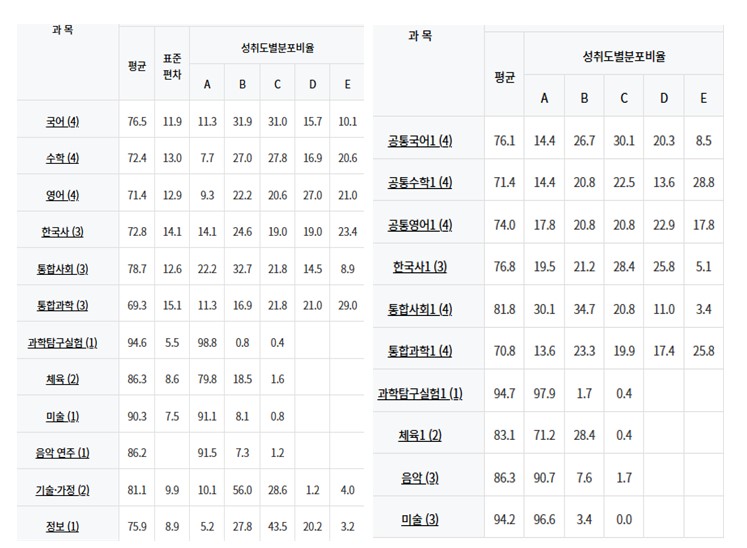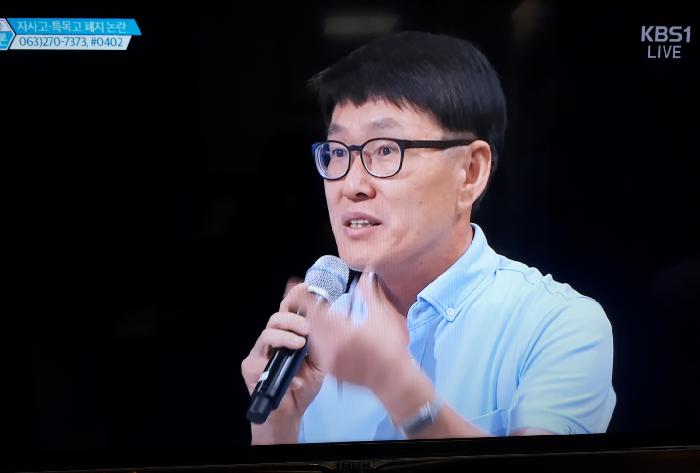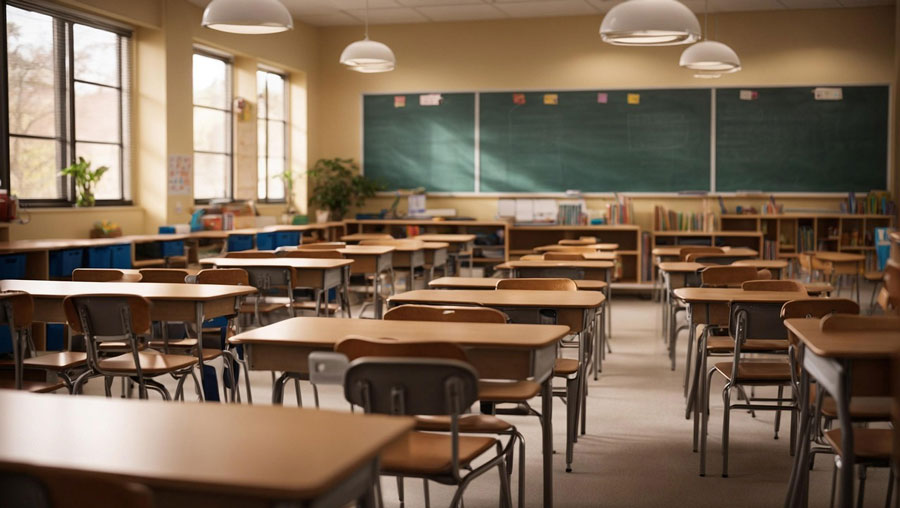지난 한 학기 동안 우리나라 교육은 고교 학점제와 최소 성취 보장 지도(최성보)의 찬반 논쟁으로 보냈다고 해도 과언이 아니었다. 교사에게 과중한 업무 유발을 이유로 최성보에 대한 찬반 논쟁은 더욱 뜨거웠다. 10월이 되었다. 지난 1학기 학업 성취 사항에 대한 내용이 학교 알림이를 통해 정보 공시되었다.
논쟁이 치열했던 최성보의 효과를 학업 성취도별 분포 비율을 통해 확인할 수 있다. 정확한 미도달 학생 숫자는 알 수 없었지만 2025년과 2024년 성취 수준의 비교를 통해 금년도 성취 평가와 최성보 지도 내용을 확인해 보자. 2024년까지는 석차 등급이 절대적인 학업 역량 평가 지표였다. 학생부에 기재되어 있던 성취도별 분포 비율은 관심이 거의 없었다.
2025년 고교학점제의 본격 시행과 더불어 석차 5등급제와 함께 성취평가를 하면서 최소 성취 수준에 도달하지 못한 학생에 대한 보충 프로그램 운영을 의무로 규정하였다. 이에 따라 성취 수준 E에 속하는 학생 비율에 관심이 높아졌다. 성취 수준 A와 E의 분포 비율을 통해 성취 평가에 따른 교과별 학업 성취 사항을 파악할 수 있기 때문이다. 최소 성취 수준에 미도달 예상 학생을 예방하기 위한 수업과 평가의 노력을 일부분 엿볼 수 있다.
지역 일반고의 사례를 통해 지난 1학기의 성취 평가에 따른 결과를 분석하겠다. 먼저 2024년과 2025년 1학년의 1학기 교육 과정 편성과 성취도 분포를 비교해서 살펴보자.
1학년 교육 과정은 국민 공통 교육 과정으로 큰 차이는 없다. 다만, 과목 명칭의 변화가 보인다. 국·영·수 과목 앞에 ‘공통’이란 단어가 추가되었다. 2025 교육과정에서는 ‘공통수학’과 ‘기본수학’을 별도 편성하여 운영하도록 하였다. 성취 수준 E 이하에 해당하는 학생에게는 선택권을 부여하도록 기획하였다. 그러나 1학년 교육 과정에서 성취 수준 E에 해당하는 학생을 고교 입학 전에 파악하기 어려운 문제, 상대 평가 체제에서 내신의 유불리, 부정적인 낙인 효과 등을 이유로 대부분 학교에서 학생 선택권을 부여하지 않는다.
탐구 영역 수능 출제 범위가 1학년 과정인 ‘통합사회’와 ‘통합과학’으로 되면서 운영 시수가 3학점에서 4학점으로 증가하였다. 1학년부터 2015에 비해 2022에서 오히려 과목 선택권이 축소되는 현상이 나타나고 있다. 1학년에서 2학점 정도 학생 선택 과목이 사라졌다.
2024년에는 성취 수준보다 석차 등급에 더 많은 중점을 두었다. 다만, 일부 학교는 2025년 실시 예정된 성취 평가에 단계적으로 대응하면서 성취도별 분포 비율을 고려한 수업과 평가를 하였다. 예시 학교도 마찬가지 노력을 한 듯하다. 수학의 경우 A 수준이 7.7%에서 14.4%로 증가하였다. 물론 성취 수준 A가 고정 분할인지 추정 분할인지는 알 수 없으나 학습 내용을 90% 이해한 것으로 판단하는 학생 비율이 2배 이상 증가하였다. 다만 학습 내용을 60% 이하로 이해한 학생 비율도 20.6%에서 28.8%로 증가하였다. 아직 고민이 많이 필요하다. 다른 교과의 경우 성취 수준A 비율이 50% 이상 증가하고 E 비율 학생은 50% 이상 감소한 것으로 바타났다. 실제 수업의 변화까지 파악하기는 어렵지만, 평가 결과로는 이전보다 수업을 포기하면서 소외되는 학생 비율은 분명 감소한 것으로 나타났다.

2024년 1학년 1학기 공통과목 성취도별 분포
교육계 일부에서는 출제 문항의 난이도를 무리하게 하향 조정하고 수행 평가 비율은 비정상적으로 올리는 등 ‘성적 조작’에 가까운 부작용이 있었다고 우려스러운 언급을 하기도 하였다. 그러면 같은 1학년의 ‘과학탐구실험’과목의 성취도별 분포는 어떻게 설명해야 하나? A 비율이 98.8%이다. 물론 실험 중심 과목이다. 그러나 이론 과목인 ‘통합과학’의 내용을 90% 이상 이해한 학생 비율이 11.3%에 불과한 상황에서는 더욱 그렇다. 이론은 모르는데 실험은 잘한다? 성적 조작 아닌가? 그러나 성적 조작으로 판단하지 않는다. 절대 평가 아니? 성취 평가이기 때문이다. 성취 수준을 학생의 학업 역량을 기준으로 설계하면 수업과 평가를 진행하면 가능하다. 충분히 할 수 있다.
같은 학교의 2학년 물리학·화학·생명과학·지구과학의 성취도별 분포이다. 모두 일반 선택 과목이다. 성취 수준 A 비율이 물리학Ⅰ 3.7%, 화학Ⅰ 8.8%이다. 생명과학Ⅰ은 11.1%로 상대적으로 높다. 그러나 E 비율은 모두 20% 이상이다. 일반 선택 과목은 9등급 상대 평가, 규준 참조 평가이다. 성취도별 분포 비율보다 집단 내 다른 학생들과 비교하여 9등급으로 상대적인 위치를 평가하는 수업과 평가의 결과이다.

2025년 1학기 2학년 일반선택 과목 성취도별 분포 비율
3학년 진로 선택 과목은 A, B, C 수준의 3등급 성취 평가이다. 학습자가 설정된 기준(준거)에 얼마나 도달했는지를 평가하는 절대 평가 방식이다. 2학년 3.7%에 불과했던 물리학Ⅰ의 A 수준에 해당하는 성취도별 분포가 물리학Ⅱ에서는 68.2%로 향상되었다. 화학Ⅱ도 52.8%, 생명과학Ⅱ 59.6%으로 A 수준이 증가하였다. 물론 1학년의 5등급과 3학년의 3등급 구분에는 차이가 있지만, 상대적으로 A 수준 비율이 높은 것은 사실이다.

2025년 1학기 3학년 진로선택 과목 성취도별 분포 비율
3등급 예시 비율은 40%, 30%, 30%이다. 그러나 이런 상황을 성적 조작이라 하지 않는다. 다만 누구도 하위 30%를 고민하지 않았다. 성취 평가인데 성취수준 이하의 학생에 대한 고민이 없었다. 반성도 부족했다. 이러한 상황에서 경쟁 완화를 목적으로 절대 평가를 주장하는 일부의 요구는 언론에서 걱정하는 ‘하향 평준화’만 초래할 뿐이다. 그에 대안으로 제시된 해법이 최성보 지도였다. 상대 평가의 상황에서 절대 평가를 요구하는 1학년의 어려운 현실에서 현장 교사의 노력은 1학기 정보 공시 내용을 통해 어느 정도 확인된 것으로 보인다. 2학기에는 1학기보다 더 개선된 성취 분포 결과가 나타날 것을 기대해 본다. 단순 수치가 아니라 실제 수업과 평가에서도 한 단계 진보가 이루어질 것이다.
성취 평가는 문항 변별력보다 문항 난이도와 정답률에 따른 신뢰도를 더욱 중요하게 판단한다. 학생의 학업 수준에 맞는 눈높이 교수 학습과 평가는 성취 평가에서 가장 중요한 지표이다. 따라서 최성보 반발보다는 상대 평가와 수능 중심으로 일부 상위권 학생 중심의 수업과 평가에 대한 반성과 학생의 성취 수준에 맞는 수업 설계와 평가에 대한 고민을 본격화해야만 한다.
성취 평가는 교육 목표의 달성 여부를 평가하는 준거 지향 평가의 특성상, 문항의 변별력보다는 학생들의 성취 수준을 정확하게 판단할 수 있는 문항의 난이도 분포와 신뢰도를 더욱 중요하게 고려한다. 학생의 현재 학업 수준에 맞는 눈높이 교수 학습과 평가 설계는 모든 학생의 성취 증진을 목표로 하는 성취 평가제의 가장 핵심적인 지표이다.
따라서 우리는 일부 상위권 학생 중심으로 운영되던 기존의 상대 평가 및 수능 위주 수업과 평가 방식에 대한 반성을 본격화해야 한다. 나아가 학생 개개인의 성취 수준에 적합한 교육 과정 재설계와 평가 방안을 고민하여, 성취 평가제의 본래 취지를 실현하는 방향으로 교육 시스템을 전환해야 한다. 금년 최소성취보장지도는 그 출발점이 되어야 한다.
 전북지역공동 교육위원회 자문
전북지역공동 교육위원회 자문
한국중등수석교사회 회장
전) 전북교육공동연구원 대표





 전북지역공동 교육위원회 자문
전북지역공동 교육위원회 자문